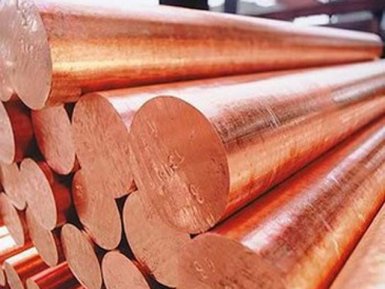Annealing, quenching and heat treatment of brass

Are you interested in annealing, hardening and other types of heat treatment of brass from the supplier company AvecGlob? Here you will find the necessary information on this topic.
Depending on the final purpose, brass alloys can undergo several heat treatment processes.
Homogenization
Homogenization is used to dissolve and absorb segregation and reduce corrosion found in some cast and hot treated brass alloys (mainly for tin and nickel-doped brass).
Annealing
An annealing of cold-rolled brass is carried out by heating to a temperature that causes recrystallization, and if a maximum reduction in hardness is desired, by heating much higher than the recrystallization temperature to cause grain growth. Important is the heating method, the furnace design, the furnace atmosphere and the shape of the billet, because they affect the uniformity of the results, the completion and the cost of annealing. For brass alloys, the grain size is the standard means of evaluating recrystallization annealing. The most effective for annealing react brass, which contain aluminum in its composition.
In the case of lateni, two annealing options are practiced — easy annealing, which is performed at a temperature slightly higher than the recrystallization temperature, and a soft annealing that runs a few hundred degrees higher, at a temperature just below the point at which rapid grain growth begins.
Supplier — AvekGlob Company — offers various types of products from brass alloys of domestic and foreign production, which meets the requirements of standards. The products are offered at affordable prices from the manufacturer. The supplier guarantees the timely delivery of products to any address specified by the consumer.
Vacation
The stress relief in brass alloys is aimed at reducing or eliminating residual stresses arising during cold plastic deformation. This reduces the likelihood that the brass part will not undergo spontaneous corrosion cracking or reduce the limit of its fatigue strength. Brass release is carried out at temperatures below the normal annealing range.
Hardening and Aging
High strength in most alloys of brass is achieved through cold working. The phenomenon of thermal hardening is used to strengthen special types of brass alloys above the usual levels obtained due to cold plastic deformation.
Hardening of brass consists in rapid heating to high temperatures, and subsequent aging at a lower temperature for a time usually not exceeding 3 hours. Further cooling follows in still air.
By varying the time and temperature of aging, various combinations of the properties of brass alloys are obtained: strength, hardness, ductility, conductivity, impact resistance (fatigue strength), and elasticity.
Supplier — AvekGlob Company — offers to purchase assorted brass alloys of domestic and foreign production. Products can be bought at a price formed on the basis of European and world standards. Implementation is possible in bulk and retail, for regular customers, a flexible system of discounts operates.


